Note: Measurements taken in the anechoic chamber at Canada's National Research Council can be found through this link.
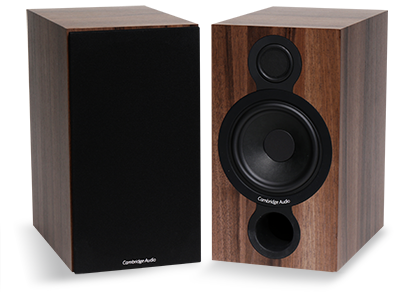
 Publisher’s prerogative -- that’s what I call my ability, as publisher of the SoundStage! Network, to nab a product intended for another reviewer when it’s sent first to me -- to be measured, or because the manufacturer had only my shipping address -- and something about it piques my interest. Actually, a better word might be greed.
Publisher’s prerogative -- that’s what I call my ability, as publisher of the SoundStage! Network, to nab a product intended for another reviewer when it’s sent first to me -- to be measured, or because the manufacturer had only my shipping address -- and something about it piques my interest. Actually, a better word might be greed.
I exercised my prerogative a few years ago, with PMC’s twenty.24 loudspeaker, and again for the subject of this review: Cambridge Audio’s Aero 2 loudspeaker ($549 USD per pair). When I heard the Aero 2s in my room, I wanted to write about them.
Description
The Aero 2 is a member of a new line of Cambridge Audio speakers that also includes the Aero 6 floorstander, Aero 5 center-channel, Aero 3 surround, and Aero 9 subwoofer. A cursory glance at the Aero 2 reveals nothing special -- it’s a stand-mounted two-way in a rectangular MDF box measuring 14.4”H x 7.9”W x 12.1”D and weighing 15 pounds. On the front is a port to augment the bass (a foam plug is provided should the bass output be too much), and on the rear are binding posts of decent quality. Magnetically attached grilles conceal and protect the drivers and ports, but I left these off for serious listening. Cambridge claims for the Aero 2 a sensitivity of 90dB (2.83V at 1m), an impedance of 8 ohms, and a frequency response of 40Hz-22kHz, all pretty typical for a small two-way.
And if that’s all there were to this one, I’d have said, “Ho-hum” and moved them right along. But two things distinguished the Aero 2. One was the quality of its veneers. The two options, Black and Walnut, are both vinyl, but look so much like real wood that I had to look closely at my review samples not once, but several times, and still had trouble believing it. It looks real.
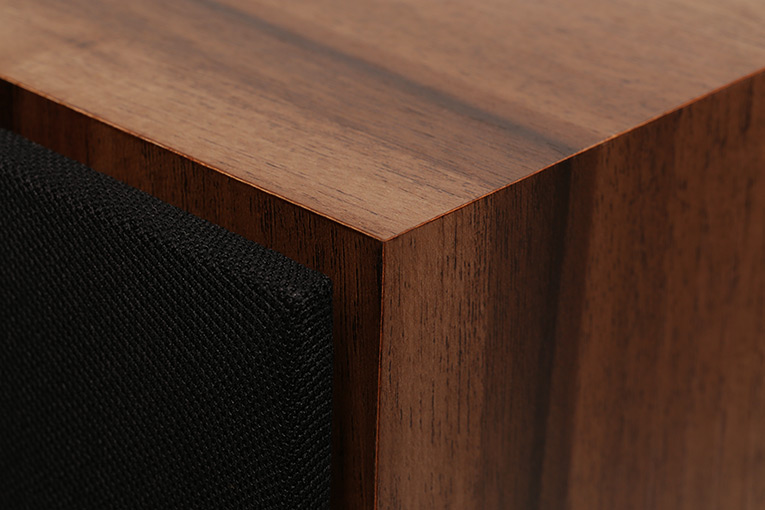
The other thing is the Balanced Mode Radiator driver. A BMR is similar to a conventional driver in having a basket, voice-coil, spider, magnet, etc., but its diaphragm is different -- it’s flat. The Aero 2’s BMR driver is about 2” in diameter and made of paper -- flat on the front surface, with a paper honeycomb structure behind it. A BMR’s interaction with the air is different from that of a conventional cone or dome. According to a Cambridge white paper, “In a traditional loudspeaker, the cone acts as a ‘rigid piston’ at low frequencies, but turns into a multimodal object when approaching its so called ‘breakup region.’ In a BMR there is no ‘breakup region.’ Instead, a limited number (usually 2-4) of modes are carefully positioned within the frequency band. The modal, bending-wave operation starts in the frequency range where the piston-like operation of the membrane would otherwise cause the driver to beam, filling in the off-axis response to maintain wide dispersion. The result is a drive unit that, off-axis, operates like a piston at low frequencies, but becomes a bending wave device at high frequencies. On-axis the BMR is purely pistonic.” If that’s difficult to grasp, Cambridge has posted a video on YouTube that does a good job of showing how it works.
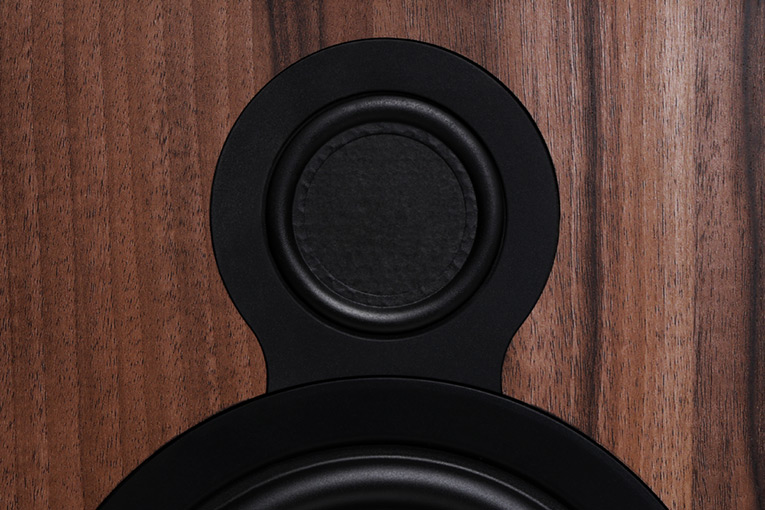
The BMR’s unique operation is said to offer flat on-axis response and wide dispersion, even at frequencies above 10kHz, where most dome tweeters beam (i.e., narrow their output). Cambridge’s BMR, which they say features the latest implementation of this technology, has a neodymium magnet, which helps make for a robust motor system, and copper foil over the magnet’s pole piece, which their literature says reduces the driver’s impedance at higher frequencies, resulting in increased output in that part of the audioband. The BMR also has very wide bandwidth, which allows Cambridge Audio’s designers to cross it over to the Aero 2’s 6.5”, paper-coned woofer at the amazingly low frequency of 250Hz. (Like the BMR driver, this woofer is specially made for the Aero line.) Cambridge says that this provides multiple benefits: First, because a single driver is reproducing all frequencies throughout the mids and highs, there is greater coherence and transparency. Second, with the BMR driver operating below 300Hz, the on- and off-axis dispersion characteristics of it and the woofer blend ideally, to make an aurally seamless transition from lows to highs. This is in contrast to most two-way speakers with a tweeter and midrange-woofer that hand off to each other somewhere between 2 and 3kHz, a bandwidth within which a tweeter disperses sound across a very wide window, but where the midrange-woofer is already beaming, which in turn creates inconsistencies in the on- and off-axis responses.
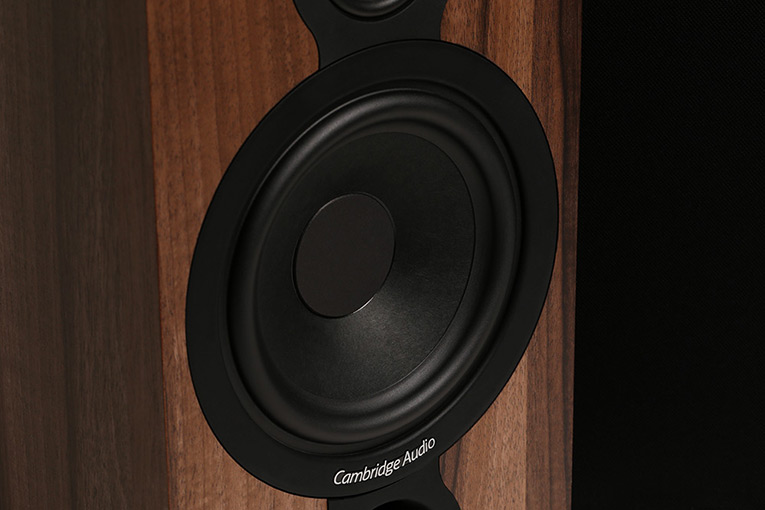
In short, what seems on the surface to be a pedestrian-looking, inexpensive speaker includes some interesting technology, not to mention some fantastic finish work. But the real question is: How does it sound?
Sound
I began my audition of the Aero 2s by putting them on 24”-high Foundation stands and giving them a trial by fire: They directly replaced in my system the Magico S5 ($29,400/pair) and Polymer Audio Research MKS ($42,000/pair) speakers, both of which I’d just finished reviewing. The system comprised similarly expensive, top-of-the-line electronics from Simaudio (Moon Evolution 870A stereo amp) and EMM Labs (PRE2 preamplifier and DAC2X digital-to-analog converter), as well as interconnects from Crystal Cable (CrystalConnect Standard Diamond) and speaker cables from Siltech (Classic Anniversary 330L).
If anything, considering what I’d just been listening to, such a mix of components should have resulted in deeply disappointing sound. Instead, I was blown away by what I heard from the Aero 2s -- particularly in the midrange, which was exceedingly clean and transparent, not unlike an electrostatic design.
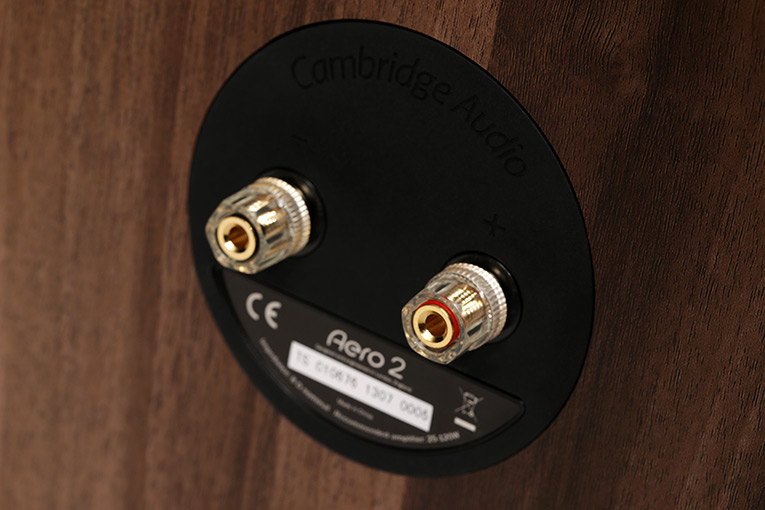
But before I got too used to that system’s very expensive electronics and cables, I replaced the amp and preamp with something closer to the Aero 2’s price: Anthem’s Integrated 225 integrated amplifier ($1799). I also swapped out the Siltech speaker cables for DH Labs’ Silver Sonic ST-100, which sold in bulk for less than $5/foot before it was discontinued. However, my Samsung laptop still fed the EMM Labs DAC2X -- although I did have lower-priced DACs on hand, I now know the sound of that digital front end so well that it greatly helps me assess what other components in the system are doing.
The swappings-out of electronics and wires changed the sound -- the Anthem 225 can’t match the refinement and resolution of the Simaudio 870A and EMM Labs PRE2 combo, and the DH Labs cables lack the purity and clarity of the Siltechs and Crystals. However, the sound wasn’t different enough to alter my positive initial impressions of the Aero 2, particularly its midrange performance, which allowed voices to be reproduced with a naturalness and realism that were uncanny for a speaker at this price. For example, throughout his To All the Girls . . . (16-bit/44.1kHz FLAC, Columbia/Legacy), Willie Nelson’s voice sounded highly present -- visceral, immediate, with a he-was-here quality -- without ever becoming too chesty or full. Sade Adu’s voice on her Soldier of Love (16/44.1 FLAC, Sony) had a purity, transparency, and clarity reminiscent of what I’d heard through the Polymer MKSes. Norah Jones’s and Billie Joe Armstrong’s voices in “Roving Gambler,” the first track on their Foreverly (16/44.1 FLAC, Reprise), were reproduced side by side on the soundstage with incredible clarity. At this point I’d usually make a comparison to a competitively priced speaker, but I can’t -- there’s not a speaker near the Aero 2’s price that I’ve heard recently that reproduces voices as naturally, or with the same kind of clarity and transparency.
Spaciousness was also a strength -- these little speakers sounded much bigger than they are. Just as impressive were the sizes of the soundstages the Aero 2s created, and the absolute precision of the images placed on them. When I played the Cowboy Junkies’ The Trinity Session (16/44.1 FLAC, RCA) -- recorded with a single Calrec Ambisonic microphone in the Church of the Holy Trinity, in Toronto, Canada -- I was presented with a spacious soundstage comparable to those I’ve experienced with some of the best speakers I’ve heard, yet within that soundscape was a rock-solid specificity of image. For example, in the opening track, “Mining for Gold,” Margo Timmins’s voice hung there at the center of the stage, with tremendous focus and a reach-out-and-touch-it palpability. The immense space of the church sanctuary around her, and the sound of the Toronto subway rumbling up from below, engulfed the speaker end of my room.
Daft Punk’s Random Access Memories (24/88.2 FLAC, Columbia) was recorded with many more mikes and far more studio trickery than Trinity, but every track has a realistic-sounding soundstage with excellent width and, depending on the cut, significant depth. I most like “Within,” which opens with Chilly Gonzales on piano. Through the Aero 2s, his piano was far enough back on the stage, with the proper left-to-right spread. When, beginning 42 seconds in, the cymbals are lightly struck, their precise locations on the stage were lit up as if by a sniper’s laser gunsight. Last year, I praised KEF’s LS50s ($1500/pair) for their ability to create a vast sense of space in my room with solid image placement; now I give the nod to the Aero 2s for even greater spaciousness -- a huge stage -- along with specificity just as good. The big difference in their prices gives you an idea of the Aero 2’s achievement in this regard.
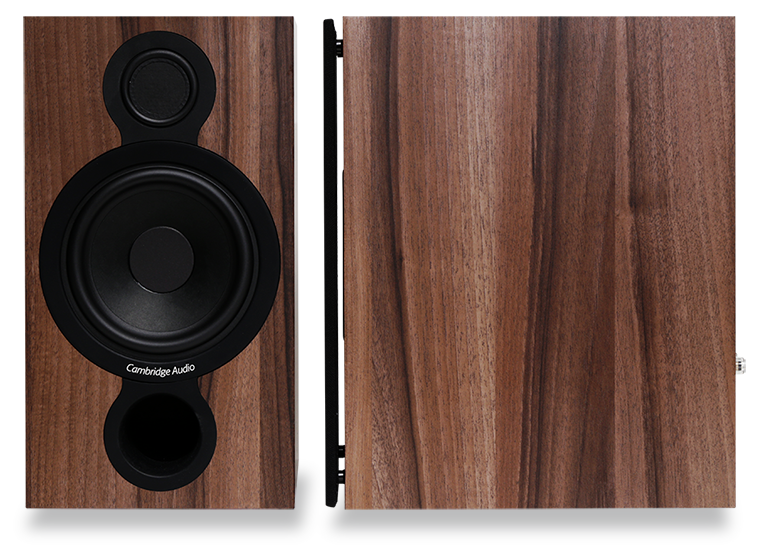
The Aero 2s’ bass weight was also commendable -- in my room, the pair easily dove to below 50Hz with good punch. In combination with their spaciousness, their sound was weighty and full enough to let pianos sound remarkably good for such a small, inexpensive speaker. When I played “With My Own Eyes,” “Farewell,” and “Love Letters,” all from Dario Marianelli’s score for the film Atonement (16/44.1 FLAC, Decca), I heard a rich, gutsy, ballsy sound that made the piano sound not the way it usually does through small speakers -- lightweight and tinkly -- but natural and realistic. One downside to the Aero 2’s bass was that it was a tad woolly, particularly when compared to more expensive speakers -- something I’ll touch on more below. But for $549/pair, the bass was more than respectable.
The Aero 2’s highs were decidedly different from anything else I’ve heard from lower-priced speakers: well extended and very clean, but ultimately a little soft (i.e., down in level) compared to, say, KEF’s LS50, Focal’s Chorus 807 W Prestige ($1599/pair), or even Paradigm’s Atom Monitor v.7 ($398/pair) -- all stand-mounted designs that have been reviewed for SoundStage! Hi-Fi. Each of those speakers has a traditional dome tweeter voiced to be a little tipped up on top, which gives them lively, exciting sounds. (That tipped-up top end seems to be a trend; more and more speakers I hear exhibit that characteristic.) The Aero 2’s top end was equally refined but not at all tipped up, and so was far more polite. Which voicing you’ll prefer will depend largely on your taste in sound. If you like spirited highs that are more in your face, a speaker like one of those three will be your ticket; if you like a more relaxed sound, the Aero 2 will be the choice.
Good bass weight, refined highs, superb spaciousness, a midband to die for -- it’s hard to find much to criticize in the Aero 2 for its price. However, it did fall short in output capability. The Aero 2s easily played loudly enough in my room, which is larger than the typical domestic space -- but when I cranked them up to super-high levels, they began to compress and congest, particularly in the bass. How much this will matter to you will depend on how big your room is and how loudly you like to play your music.
Conclusion
Even with its great veneer work, the Aero 2’s rectangular cabinet is plain -- yet the sound that comes out of it is anything but: good bass weight, slightly soft but still very refined highs, and, throughout the midrange, such utter magic that you might be tricked into thinking you’re hearing a speaker costing multiples of its price. Combine those qualities with soundstaging and imaging that are nothing short of extraordinary for $549, and the result is not only one of today’s best deals in an inexpensive loudspeaker, but true high-end sound for a next-to-nothing price.
I highly recommend Cambridge Audio’s Aero 2. For its combination of high performance and value, it’s a frontrunner for one of our Product of the Year awards, to be announced at the end of this year.
. . . Doug Schneider
das@soundstagenetwork.com
Associated Equipment
- Loudspeakers -- Magico S5, Polymer Audio Research MKS, KEF LS50, Paradigm Atom Monitor v.7
- Integrated amplifier -- Anthem Integrated 225
- Power amplifier -- Simaudio Moon Evolution 870A
- Preamplifier -- EMM Labs PRE2
- Digital-to-analog converter -- EMM Labs DAC2X
- Computer -- Samsung laptop running Windows 7 and JRiver Media Center 18
- Digital interconnect -- AudioQuest Carbon
- Analog interconnects -- Crystal Cable CrystalConnect Standard Diamond
- Speaker cables -- Siltech Classic Anniversary 330L, DH Labs Silver Sonic ST-100
Cambridge Audio Aero 2 Loudspeakers
Price: $549 USD per pair.
Warranty: Five years parts and labor.
Cambridge Audio
Gallery Court, Hankey Place
London SE1 4BB
England, UK
Website: www.cambridgeaudio.com
North American distributors:
Audio Plus Services (US)
156 Lawrence Paquette Industrial Drive
Champlain, NY 12919
Phone: (800) 663-9352
Website: www.audioplusservices.com
Plurison (Canada)
313 Marion Street
Le Gardeur, Quebec J5Z 4W8
Phone: (866) 271-5689
Website: www.plurison.com






















